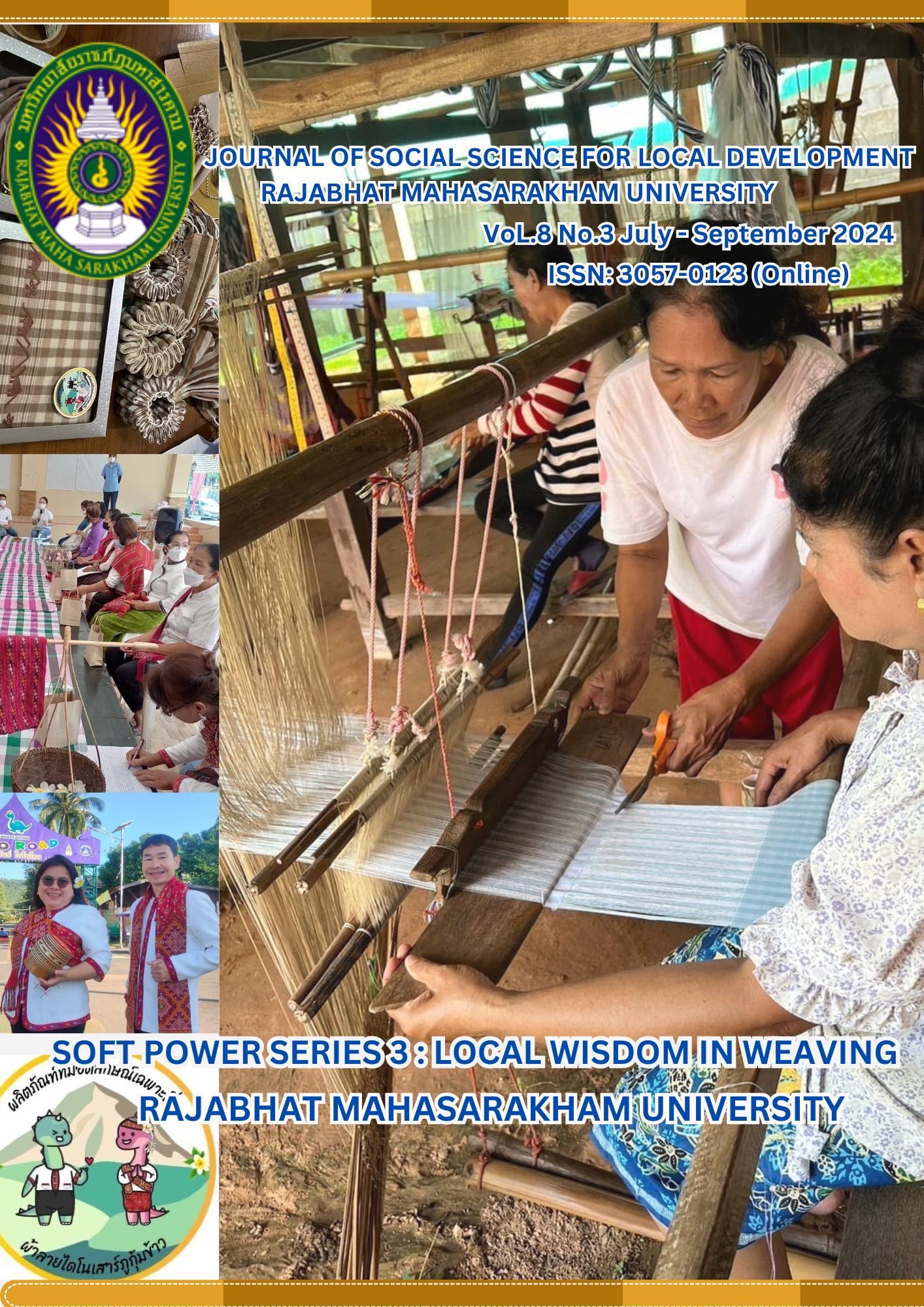Mai Mue Mae: Design Mudmee Silk Motifs for Community Foundation Economy Huadong Subdistrict Nadoon District Mahasarakham Province
Keywords:
Mai Mue Mae, Mudmee Silk, DesignAbstract
This research consists purposes were 1. to study and collect information on the silk fabric of Huadong Subdistrict, Nadun District, Mahasarakham Province 2. to design the silk fabric pattern for the grassroots economy of Huadong Subdistrict Nadun District Mahasarakham Province and 3. to study the satisfaction of the silk fabric pattern of Huadong Subdistrict Nadun District Mahasarakham Province. This research is mixed method research between qualitative and quantitative research. This research is a Mixed Methods of qualitative and quantitative research. The research instruments are questionnaires, interviews and observation forms. There are 25 samples and 25 target groups that are specifically selected. The data collected from the questionnaires are analyzed using descriptive statistics, including percentages, means and standard deviations. The data collected from documents, interviews and observation forms are content analysis. The results showed 1) Collect information on Mudmee silk at Huadong subdistrict, Nadoon district, Mahasarakham province. That 46 patterns of Huadong subdistrict Mudmee Silk divided according to the nature of the fabric patterns, there are 17 natural patterns, 10 household patterns, 6 religious patterns, and 13 artificial patterns. 2) To design Mudmee silk motifs for foundation economy using computer programs is design process emphasizes the uniqueness and identity that exists in the Huadong subdistrict community, such as customs, traditions, rituals, culture, etc., to be expressed in the design of Mudmee silk patterns. which makes the fabric pattern designed to have the identity of the community and 3) Satisfaction of the 14 silk patterns of Huadong sub-district the top 5 patterns consisted of 1) the 9th silk pattern, Ruea Fai Phraya Nak, which was the most satisfactory (x̅= 4.86, S.D. = 0.34) 2) the 6th silk pattern, Mak Beng Yai, which was the most satisfactory (x̅= 4.85, S.D. = 0.34) 3) the 5th silk pattern, Karaprak, which was the most satisfactory (x̅= 4.76, S.D. = 0.41) 4) the 4th silk pattern, Krathong Hong, which was very satisfactory (x̅= 4.68, S.D. = 0.46) and 5) the 2nd silk pattern Khom Ha (x̅= 4.48, S.D. = 0.49).


